Candice Pedersen remembers hearing about her great-grandmother’s tattoos and wanting the same traditional markings on her skin.
“She had them on her forehead, her cheeks and her chin, on her wrists and all the way up her arm. When my mom was a little girl, she would trace each of the lines with her finger and remember each marking,” Pedersen, a guide for One Ocean Expeditions in the Arctic, told CNN Travel recently.
For millennia, Inuit women would get tattoos with needles made of bone or sinew soaked in suet. Each tattoo signified an important accomplishment – maybe skinning a fox or sewing a seal-skin parka. Pedersen was captivated by the stories, but as a teenager she was pretty sure she would only ever see tattoos “in history books.”
When missionaries arrived in Canada’s Arctic about 100 years ago, they proclaimed the tattoos evil and banned women from getting them. The markings were on the brink of dying with the last of the elders who had them.
Call it a comeback
But spurred by the documentary “Tunniit: Retracing the Lines of Inuit Tattoos” and the Inuit Tattoo Revitalization Project, Inuit tattoos are making a roaring comeback.
A brand-new Member of Parliament for Nunavut, Mumilaaq Qaqqaq, has traditional-looking tattoos on her cheeks and chin. Qaqqaq, 25, was elected October 22.
The nonprofit Revitalization Project, led by Hovak Johnston, an Inuit tattoo artist, has raised money to travel to tiny communities across Canada’s north and give Inuit women traditional tattoos with the traditional poke method. In return, the women give her a gift – anything from homemade earrings to a parka – just like their ancestors would’ve done.
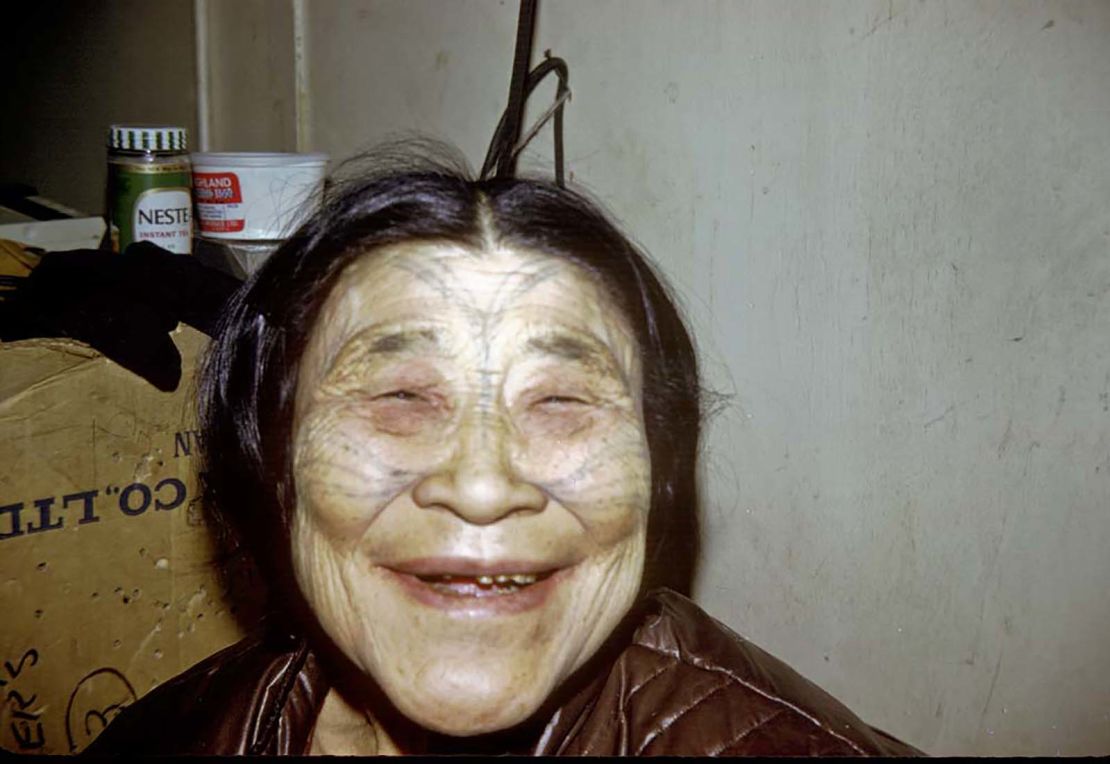
Johnston’s friend, photographer Cora DeVos, comes along to photograph the women. “When the project first started, I think there was maybe three Inuit women that were wearing the traditional markings,” says DeVos. “Now there are hundreds of women all over Canada that are wearing them. It’s beautiful to watch it come back to our culture.”
The shape of meaning
The traditional markings have deep meanings stretching all the way back to the Inuit origin stories and the sea goddess Sedna.
Legend has it Sedna called her father for help after she married a raven. As they escape in a boat, the raven whips up the seas. The father, fearful for his safety and angry at his daughter for putting them in danger, throws her overboard.
As Sedna clings to the side of the boat, he chops off her finger tips, knuckles, hands and so forth, all of which fall into the sea and become seals, whales and other mammals.
“When you see the tattoos on the hands and the arms, you’ll see the lines that indicate where she was chopped,” says Martha Kyak, an Inuit fashion designer who teaches Inuit history at Nunavut Sivuniksavut in Ottawa. “It’s very spiritual and an ancient practice that was done all across the Arctic in all Inuit land; Alaska, Canada and Greenland.”
The letter Y amidst the lines represents an essential tool for hunting seals, a mainstay of an Arctic diet. The letter V on the forehead means entering womanhood.
Stripes on the chin signify a woman’s first period. The tattoos “beautify a woman and make her complete,” says Kyak. And they also ensured that in the afterlife, a woman would go to “a place of plentiful, happiness and good things.”
A global revival
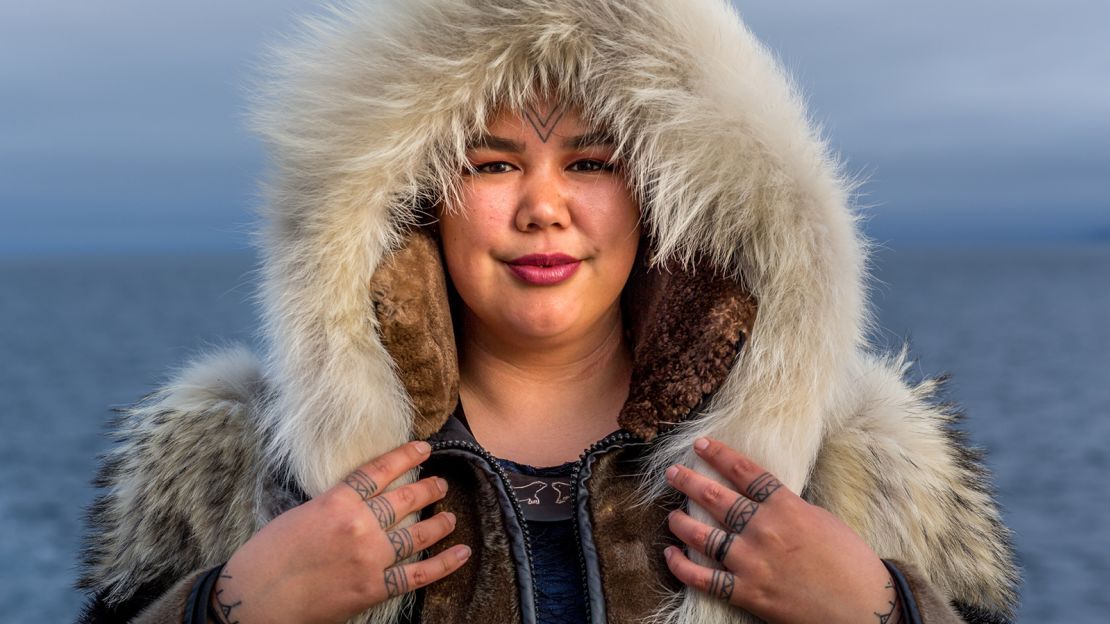
Indigenous people all over the world are known to have tattoos, including markings on their faces, says Dion Kaszas, a tattoo artist in Nova Scotia of Métis, Salish and Hungarian heritage who wrote his Masters thesis on the global Indigenous tattoo revival.
“The face, the hands and the wrists are very popular, especially this side of the border, just because the reality of the climate,” he says. “If our tattoos are saying something to the world and the vast majority of the time we’re wearing clothing, it’s not going to be able to speak and to say what it needs to say.”
During colonization, authorities in locations across North America banned different Indigenous peoples from their cultural practices, including tattoos. Some of those people, such as many in the Pacific Northwest, created jewelry with the same symbols and patterns to cover their markings while still expressing their culture.
“When you’re being persecuted, you have to find a way to adapt and to become resilient,” says Kaszas. “Originally, the use for the jewelry was to cover up the tattoos. You could wear your craft but you can take it off and not be persecuted.”
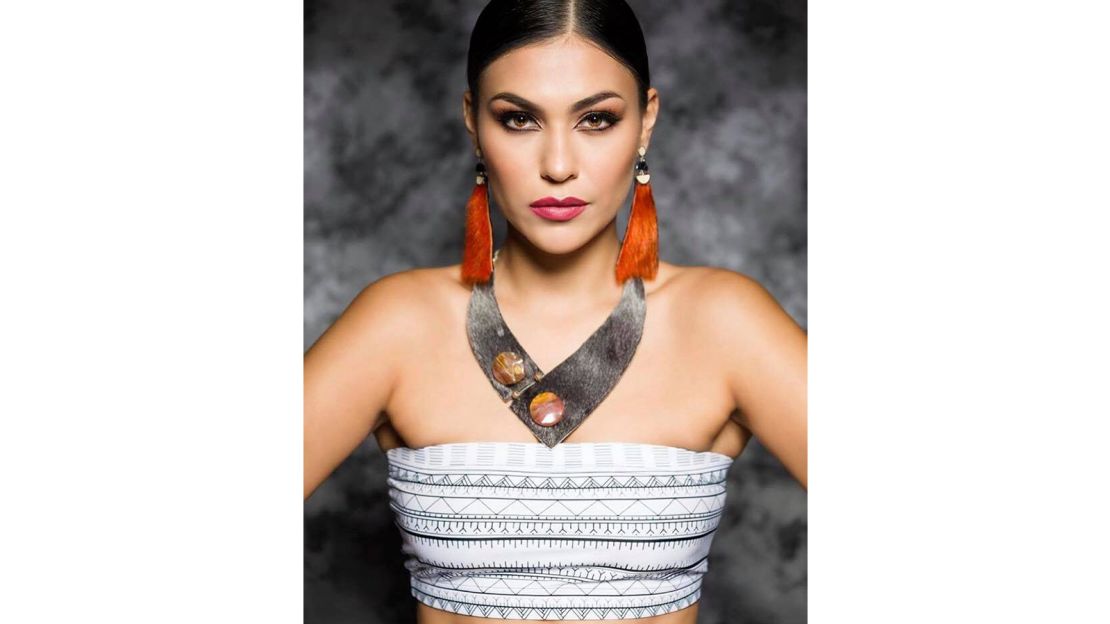
A few decades later, younger Indigenous artisans began selling bracelets, earrings and other jewelry emblazoned with once-forbidden ancient symbols. A growing appetite for Indigenous fashion helped ignite this movement.
Unlike the tattoos, which are considered appropriate for Indigenous groups only, the apparel and accessories can be purchased and worn by anyone as a way to celebrate Indigenous art and the artists creating it.
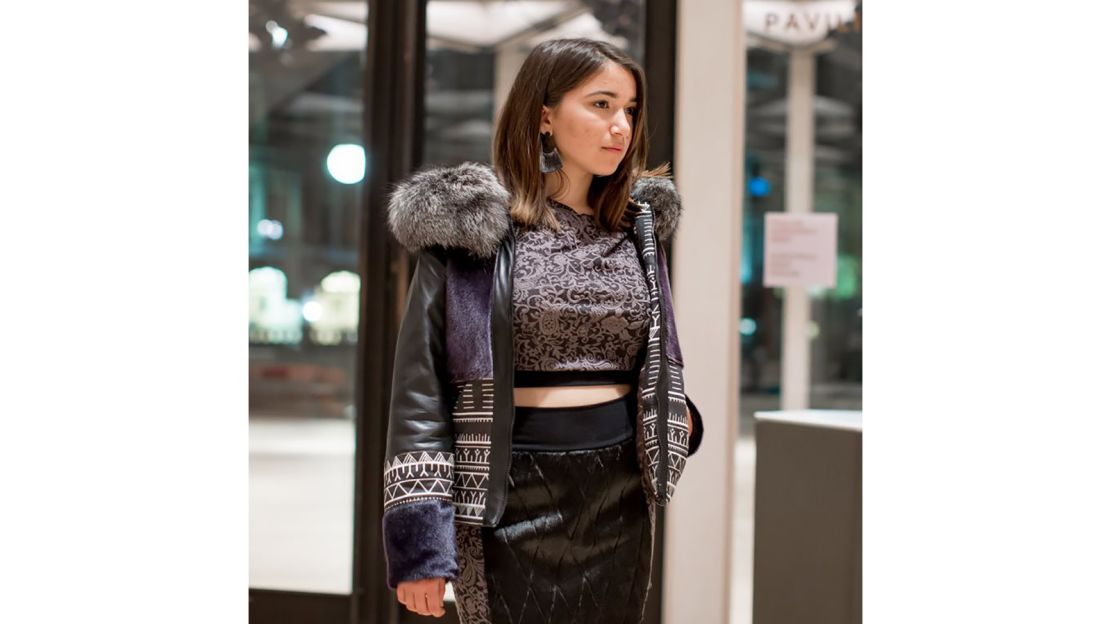
Kyak (under her aptly named Inuk Chic brand), sells clothing imprinted with traditional tattoo patterns and incorporates the markings in custom made parkas that show up on runways in Toronto and on customers as far away as Denmark and Germany.
“It seems like Indigenous people are really rising up in the art world,” says Kyak. “It’s like Inuit art is shining. And we are such a small population in the world. We’re only 155,000 in Alaska, Canada and Greenland all together.”
Connecting to Mother Earth
While traditional markings vary around the world, they all represent some sort of connection to Mother Earth, says Kaszas.
And these days, Indigenous people who are getting tattoos from Nunavut to New Zealand are inking in a whole other layer of significance. “The reality is that we have lived through a period of genocide and the markings themselves are a declaration of our resilience, our independence and our pride” Kaszas states.
DeVos sees that pride emerge time and again as she photographs women with their brand-new traditional tattoos – women including her own mom.
As a girl, her mother was sent to residential school (government and church-run institutions across Canada that were notorious for widespread abuse and designed to wipe out Indigenous culture).
When DeVos and the Inuit Tattoo Revitalization Project arrived in her hometown of Cambridge Bay, her mom didn’t like the Vs tattooed on young women’s foreheads.
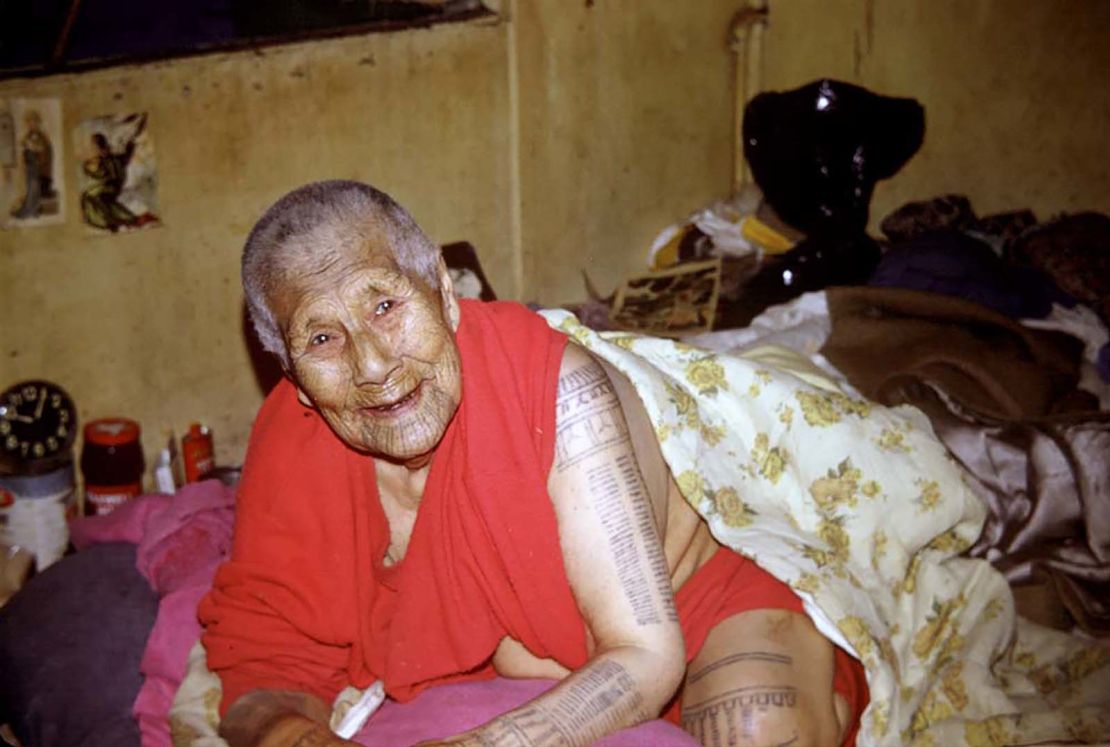
But her thinking changed over just one week. “She just saw how having these tattoos was shifting women in the community,” says DeVos. “I got home from the project one night and mom was sitting on the couch crying, and she said, ‘I’m ready to get mine.’”
The elder woman got a tattoo on her wrist and later some markings on her hands. “She got a couple of lines to represent her brothers that have passed on,” says DeVos. “My mom was never one to listen to our traditional singing or any drum dancing, anything like that. After having her tattoo, it was like she gained pride in our culture.”
A reclamation
That sense of reclamation is why Inuit women want to keep the tattoos to themselves. Pedersen spends a lot of time on board a One Ocean Expeditions small ship in polar regions with people from all over the world who ask about her tattoos.
“We are reclaiming this for us,” she tells the passengers. “I hope people continue to be understanding about that. It wouldn’t be right if anyone else got these tattoos because it’s our way of claiming back what we lost.”
Many of the meanings of the tattoos have vanished over the generations so women come up with new ones. The dashes on Pedersen’s arms and fingers symbolize big game she’s hunted, dots are her friends and the triangles symbolize the mountains of Baffin Island where she was born and raised.
“When I first got my markings I couldn’t believe that I finally had them,” she says. “I was so excited looking at my hands and my fingers. Whenever I would sew or do something with my hands, I would stop and take a moment and admire my tattoos. I still catch myself doing that once in a while.”
Jennifer Allford, a freelance writer in Calgary, covers eclectic topics for a number of North American outlets. On any given week she may write about plogging, ripped jeans and the billions of microscopic bugs in your gut. She also writes about travel with a particular interest in Indigenous experiences, stories and legends. Her credits include Canadian newspapers and magazines, the cover of Saturday Evening Post and the back page of Travel + Leisure.






